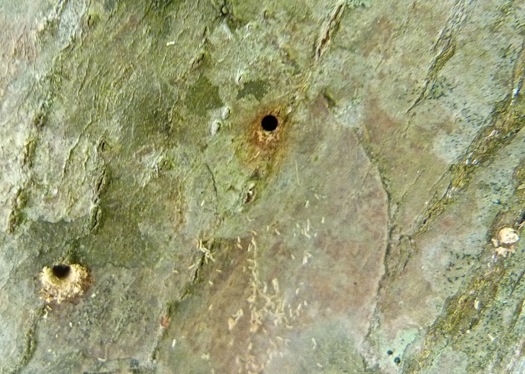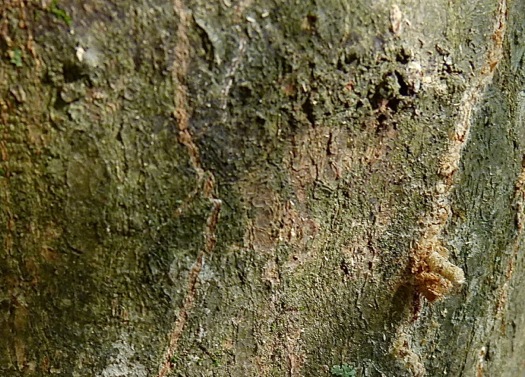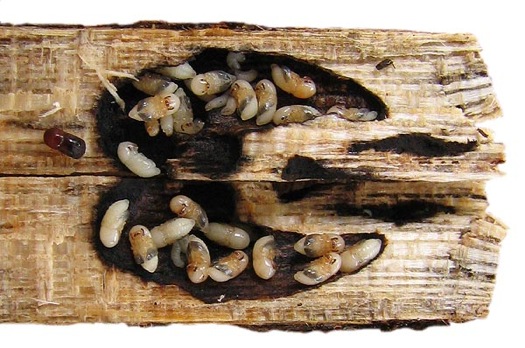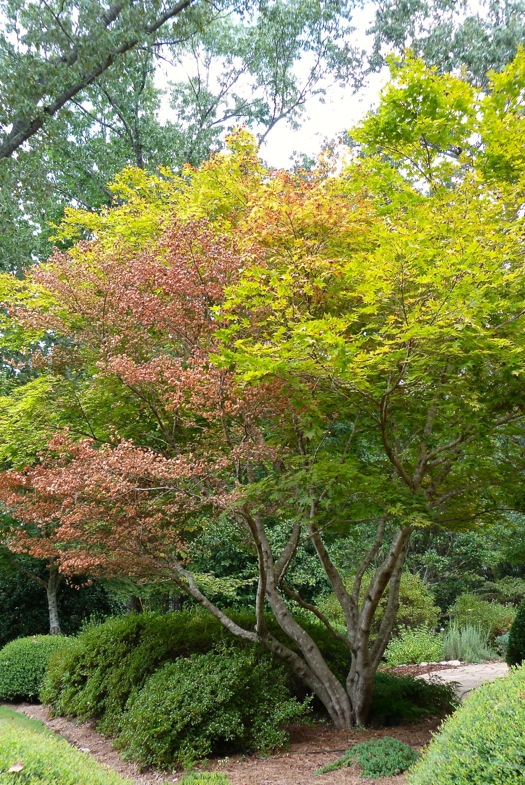Disaster: Ambrosia Beetles in a Special Tree
 Sunday, September 11, 2016 at 4:00PM
Sunday, September 11, 2016 at 4:00PM There is a 26-year old Japanese maple near the house, visible from our dining and living room windows. It is one of several Japanese maple seedlings I planted in 1990 after a tornado devastated our property. It has matured into an astonishing specimen with multi-colored leaves that are breathtaking, especially in fall when they glow with fiery magnificence.
The Japanese maple in front of the house can be seen here, behind the arch in this fall view of the front garden.
It has always been a healthy tree, until last week when I noticed that some of its leaves were dying. At first I attributed this to heat stress, but then I noticed a pile of sawdust at its trunk. Closer inspection revealed unmistakable borer holes, and my heart sank:


I emailed photos to an entomologist at the Plant Diagnostics Lab at Auburn University, and I soon had a grim diagnosis: Granulate Ambrosia Beetle. Most ambrosia beetle species don't ingest wood tissue; instead, the sawdust resulting from their excavation is pushed out of the borer holes, forming little columns of sawdust. This is exactly what is seen on my tree. Females bore into twigs, branches, or small trunks of susceptible woody plants and excavate a system of tunnels. They feed on a symbiotic fungus that they introduce into their tunnels. High humidity promotes reproduction of ambrosia beetles, and we have had a very humid summer. Eggs, larvae, and pupae are found together in the tunnel system excavated by the female.
 Photo of Granulate Ambrosia Beetle with pupae and black fungus. Photo from Wikipedia.This insect usually attacks apparently healthy hardwoods less than 3 inches in diameter, and their appearance in larger wood often is an indication that the tree is highly stressed or dying, although my tree did not appear stressed or dying until this beetle attack. Prognosis is poor. There are no chemicals that one can apply that will kill ambrosia beetles inside a trunk. Systemics will NOT work as the beetles are inside the vascular tissue of the tree.
Photo of Granulate Ambrosia Beetle with pupae and black fungus. Photo from Wikipedia.This insect usually attacks apparently healthy hardwoods less than 3 inches in diameter, and their appearance in larger wood often is an indication that the tree is highly stressed or dying, although my tree did not appear stressed or dying until this beetle attack. Prognosis is poor. There are no chemicals that one can apply that will kill ambrosia beetles inside a trunk. Systemics will NOT work as the beetles are inside the vascular tissue of the tree.
Mine is an older tree with a number of trunks. Since some of the trunks are affected and others not, the entomologist recommends that we remove the infested trunks and dispose of the wood. So this is what we are going to do. It will greatly affect the shape of the tree, and the tree may yet die. More leaves have died in the past few days. One can clearly see which trunks are affected.
More leaves have died in the past few days. One can clearly see which trunks are affected.
This Japanese maple provides filtered shade to nearby azaleas and ferns, and it also keeps hot sun from shining directly into the house. If it dies, I will greatly miss it. However, I have learned to adapt to what nature hands me in the garden. I am already thinking about how I will replace it, if that becomes necessary.




